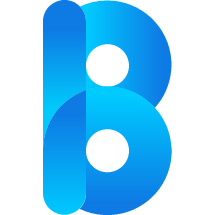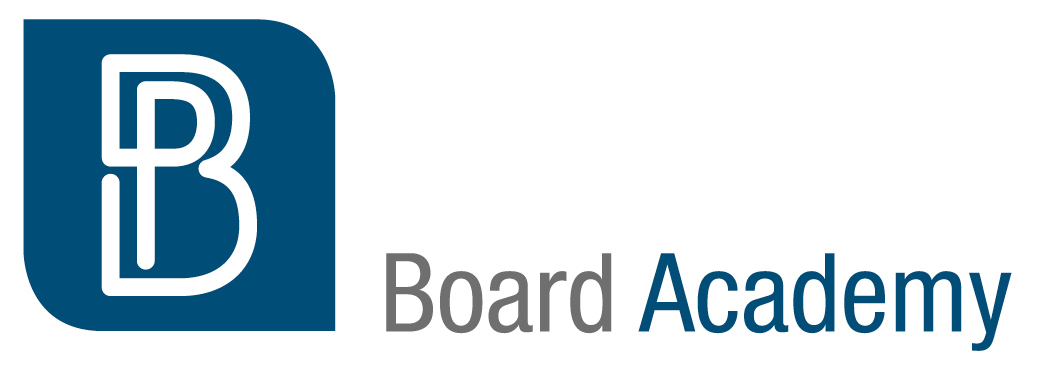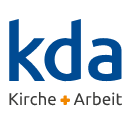
The formula for good compliance
Organizations are successful when they can make good decisions quickly in an increasingly complex regulatory environment while complying with regulations. PLLOB® makes this possible, as it makes good compliance easy to remember and simple to follow. And what is “good” compliance? Good compliance brings rules, values, principles and risks into a good balance that is put into practice.
PLLOB explained in 96 seconds

Press
Does this promote our reputation?
With this question PLLOB® covers the publicity test. When issues that do not pass the publicity test go public, they…

Leadership
Does this represent our values and make us a role model?
With this question PLLOB® makes clear that every employee can be a role model. Managers are role models whether…

Legal
Does this comply with our company policies and the law?
With this question PLLOB® establishes not only the connection to compliance with law, but also…

Others
Does my personal network agree with this?
With this question PLLOB® incorporates the personal environment because it allows managers to…

Belly/ gut instinct
Does this give me a positive feeling?
With this question managers test their gut instinct where they can cover a great range of…

Press
Does this promote our reputation?
With this question PLLOB® covers the publicity test. Here the manager will have to consider a hypothetical situation. When issues that do not pass the publicity test go public, they usually cause severe reputational damage.There are enough real life examples that clearly show how noncompliance has caused severe damage to an organization’s reputation as the noncompliance became public. If the manager is uncertain about the result of the test he will approach a colleague or a communication expert. Once the organization’s reputation is damaged, confidence in the company, its products and the people who stand for the company may suffer. Damaged trust is difficult to rebuild over a long period of time. Warren Buffet is rumored to have said: “It takes twenty years to acquire a reputation and five minutes to lose it. If you keep an eye on that, you act differently.” Things can become public in various ways. Whistleblowers might place information on respective internet platforms or simply send an anonymous letter to the media (particularly where companies lack an established, professional whistleblower reporting system).

Leadership
Does this represent our values and make us a role model?
With this question PLLOB® makes clear that every employee can be a role model. Managers are role models whether they want to be or not. Consequently, when they are acting with attention to compliance others imitate their behaviour and attitude. Managers can also lead by example and “pllob” decisions together in a team, by applying PLLOB®. Managers can ask one another if they have already “pllobed” what they consider to be a critical decision of a colleague. PLLOB® thus becomes a self-evident and natural part of the decision-making process. It then serves as a compass for compliance for all employees. If an organization has agreed on common values, they can be easily integrated into the daily work via PLLOB®.

Legal
Does this comply with our company policies and the law?
With this question PLLOB® establishes not only the connection to compliance with law, but also to internal organizational rules. The prerequisite is, however, that the internal rules are written in such a way as to communicate clearly their purpose and meaning. Absent rules, processes, instructions, and experience PLLOB® provides a backstop common sense structure for employees and managers to orient themselves in addressing compliance. PLLOB® raises the questions that need to be considered, and in so doing reminds employees and managers that it may be useful, or even necessary, to involve other disciplines in decision-making. If the questions cannot be readily answered, they will ask for advice.

Others
Does my personal network agree with this?
With this question PLLOB® incorporates the personal environment because it allows managers to test critical decisions for acceptance in a limited public context within a protected framework. If the decision is not accepted in this environment, this probably indicates the need for stakeholder management. There will also be decisions that (at least for the moment) can not be accepted and still have to be taken. In this case, the employee is attuned to it through PLLOB® and consciously makes the decision. If there is a confidentiality requirement regarding the transaction to be assessed, this must and will be observed. Within an organization, sharing information to apply PLLOB® will generally not be a problem.

Belly/gut instinct
Does this give me a positive feeling?
With this question PLLOB® asks managers to test their gut instinct where they can cover a great range of potential noncompliances. The popular saying rightly says that gut instinct seldom deceives. If managers follow their gut instinct they will test whether they can “look in the mirror” after they have made a decision. They will also ask themselves whether they would take personal responsibility for consequences of their decision. The question of gut instinct leaves managers with an afterthought when supposedly pragmatic solutions transcend red lines. As the last test point of PLLOB®, the gut instinct has an important function as a last resort backstop. It uncovers potential noncompliance that otherwise could fall through the net.
When will you PLLOB® your next decision?
Why a formula for good compliance?
The focus of most companies today is still on documenting their compliance work. In the event of compliance violations, this documentation is intended in particular to serve to relieve the executive bodies of their liability. The common compliance measures cost a lot of time and their positive effect on good compliance in particular in the sense of preventing compliance violations is increasingly questioned. Without doubt, mere documentation compliance (“paper compliance”) is “yesterday’s news”. What is decisive instead is that the attitude towards compliance and thus the behaviour in the company changes. With PLLOB®, this is exactly where you start.

How does PLLOB® work?
PLLOB® can be used as a nudge due to its shortness and design or as situational reminder of good compliance. The effectiveness of nudges is supported by studies. (See also Richard H. Thaler/ Cass R. Sunstein; Nudge, How to initiate wise decisions) Richard H. Thaler is an economics Nobel Prize winner 2017. PLLOB® reaches employees ideally where decisions are made or discussed and acts as a situational reminder of good compliance. PLLOB® thus brings compliance to the point and to the memory at the right time.
You are asking yourself how this works…
What others say about PLLOB®
Participant of the lecture “Compliance & Integrity made comprensible"– Dealing with Ethical Dilemma in Business:
„I listened to your lecture at the Protestant Academy on the topic of “Making Compliance & Integrity comprehensible – Dealing with Ethical Dilemmas in Business” with much pleasure and benefit. You succeeded in presenting the dry subject matter in a way that is also vivid for laypeople and even spiced it up with a pinch of humour. Thankfully, you also did not fail to make light and shadow clear of the compliance that actually exists and clearly point out the management responsibility in this context. Especially your “PLLOB” should prove to be a helpful “mnemonic” for all involved.”
Professor Randolf Rodenstock
Bilfinger (Thai) Construction Co., Ltd. - Sravut Rujipornpong, Managing Director
In July 2020 we at Bilfinger Thailand embarked on a fruitful journey, together with Georg Gößwein of PLLOB® Compliance GmbH and Gernot Tölle of Bilfinger SE- the aim being: future-proof and sustainable compliance at Bilfinger Thailand. We started with a survey to assess how our organization was positioned regarding the “PLLOB®-dimensions”. We found that we were well placed and that there was room for improvement in some areas. Following the first survey we introduced PLLOB® to our staff. We used physical and digital elements of PLLOB® to make compliance easy to understand, tangible and useable in everyday work. Mousepads, screensavers, pens, notepads, and face masks made PLLOB® present in our work environment. Most importantly the management was committed to apply PLLOB® to their decisions and thereby act as role models. With the guidance and support of both Mr. Gößwein and Mr. Tölle we successfully implemented PLLOB® across all levels of our company. The results of the second survey already showed positive impact of PLLOB® and helped us to work on the areas which still needed improvement. We were excited to see that the tool finds great acceptance across both white and blue-collar workers, and has become a guiding star for our management. PLLOB® not only enables us to make compliant decisions, but also helps in making clear what exactly we mean by being “compliant”. A decision is compliant when it passes PLLOB®. That is why we use the 96 seconds PLLOB® explainer-video to help newly employed members of our company tune in to our compliance culture. In the last survey which we held at the end of the implementation we could see how PLLOB® has had a great positive impact on our compliance culture. After using PLLOB® for good two years, we cherish the positive impact this tool has on our company. PLLOB® has come to stay at Bilfinger Thai and we recommend to also implement PLLOB® at your company!
Sravut Rujipornpong
Managing Director
Bilfinger (Thai) Construction Co., Ltd.
Dipl.-Kfm. Meinhard Remberg Chief Representative (Generalbevollmächtigter) of SMS GmbH, Compliance and Internal Audit; Spokesman of the Board of DICO (German Institute for Compliance e.V.)
„I have known Georg Gößwein for many years. Our path together began at the VDMA (German Engineering Federation). Here we founded the “Compliance Management” working group. Very early (2006), very courageous, very innovative… we addressed issues and the need for change there. Georg convinced me with enormous legal expertise, a pragmatic approach, great perseverance and a pleasant way of getting things across.
When I look at him and his company today, I am particularly impressed by the additional qualifications he has acquired in the meantime. He has become a universal consultant, so to speak – not only in his profession. Presumably, this has also enabled him to take a particularly differentiated and different view on compliance. In my opinion, this view enabled him to recognize that there is ultimately no way around “compliance as a management task”. It is impressive to see the energy with which he has been driving this topic forward for around a decade, and ultimately with success. With PLLOB, he has succeeded in creating a compliance formula that I believe is universally applicable. I expect this formula to gain acceptance in a similar way to the “compliance as a management task” approach.
What makes him special?
– He listens well; who can do that?
– Because of his wealth of experience, he can very quickly put what he sees and hears into a larger context.
– He is empathetic – this may be related to the fact that his wife and many children continually ground him through a rich family life.
– He is single-minded. I was able to witness this a few times when we worked on projects together. Our joint projects have thus also always been highly successful.
– In difficult situations he keeps calm and quickly finds solutions.
This is only a small selection. To avoid giving the impression that I am deliberately making a one-sided assessment here, I would like to mention one more area where he still has “room for improvement”: It is the calm and composure that sometimes comes with age, for which he is perhaps still too young. He could sometimes be a little more patient. Since, especially in the area of compliance, he is driven by the conviction to address the issues that absolutely must be tackled, and since this can sometimes be a sluggish process, I also understand that he sometimes gets impatient. Particularly since I am convinced that he is addressing exactly the right issues, especially with “Compliance as a management task” and the “Compliance Formula” PLLOB.
I wish Georg much success for his PLLOB Compliance GmbH and look forward to further joint projects.”
Meinhard Remberg
University of Greifswald:
“Georg Gößwein is distinguished by the fact that he gained many years of experience as in-house General Counsel in internationally operating companies, where he was responsible for both national and international compliance issues. I have come to know and appreciate him not only as a particularly knowledgeable compliance actor, but also as a person of absolute integrity. Even in delicate cases, Georg Gößwein was not only willing, but also, thanks to his expertise and backbone, able to organize the compliance of “his” companies and enforce it internally and externally. His experience and his people-oriented personality make him a consultant who not only knows what he is talking about, but with whom his counterpart also enjoys entering into a dialogue. Proof of this is his excellent network.
With PLLOB, Georg Gößwein has conceived a professionally sound but at the same time innovative compliance tool with which “best practice” can be anchored in the DNA of a company because it supports management and employees in a positive, motivating and very practical way to act compliantly.”
Prof. Dr. Olaf Hohmann, Universität Greifswald / Rechtsanwalt
Board Partners GmbH:
„I got to know Georg Gößwein as a structurally sound and impulsive legal advisor who can moderate solutions in a systemic, thinking way. His clear picture of subtleties leads to a perceptible orientation towards opportunities without ignoring the risks. This creates a balance between what is desired and what is feasible, which is not always a matter of course in today’s complex world. I have also learned to appreciate the fact that Georg Gößwein can move in breadth and depth at all levels in the company and “takes” people with conviction. In situations, he has also been able to derive and thus resolve complicated issues in a charming and to the point manner. I like his cultural understanding of corporate management, compliance and process excellence.“
Guido Happe, Geschäftsführender Gesellschafter/ Managing Partner
Evangelische Akademie Tutzing
„As a conference team at the Evangelical Academy Tutzing, we were very grateful to have Mr. Gößwein with us, as speaker on the subject of “Compliance” who is just as well versed in the subject as he is experienced in life and work. With his enthusiastic manner, he helped our group of participants from companies, trade unions, consulting firms and the church to get into a good conversation about the complex questions of the topic and to perceive the chances and limits of compliance for our conference topic “Management of Morals”. For me, his gift for getting to the heart of things is his acronym PLLOB, which I have memorized as a guide to questions about a good compliance culture.“
Peter Lysy, Pfarrer




